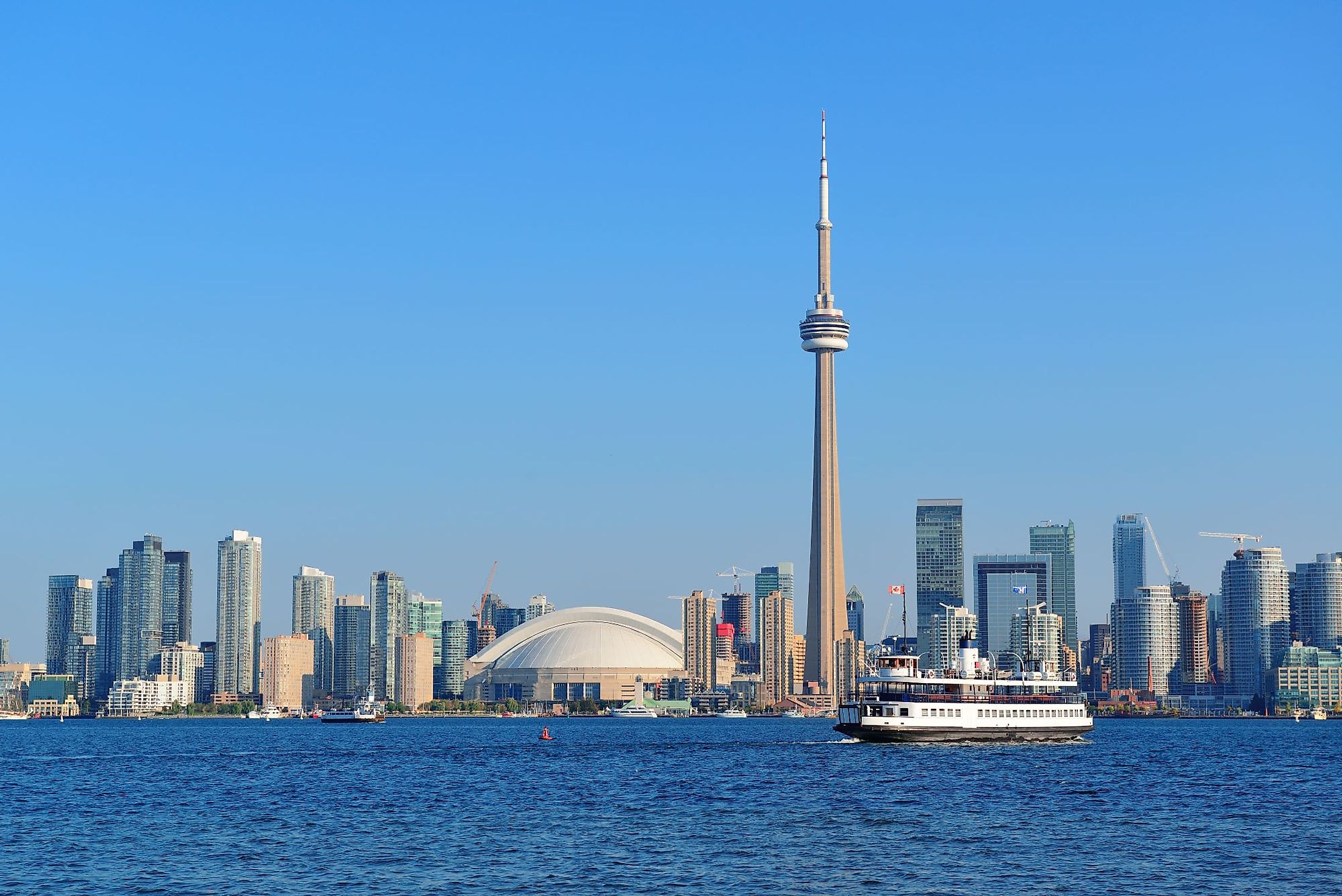
Toronto, Canada
Toronto is by far Canada's most populous city and North America's fourth-most populous city. Despite not being the country's capital, Toronto has cemented itself as Canada's answer to the world's most influential cities. Today, Toronto rivals cities like Los Angeles, London, New York, and Tokyo through its influence, arts, culture, and commerce. Toronto serves as the capital of the Canadian province of Ontario.
Geography And Climate Of Toronto
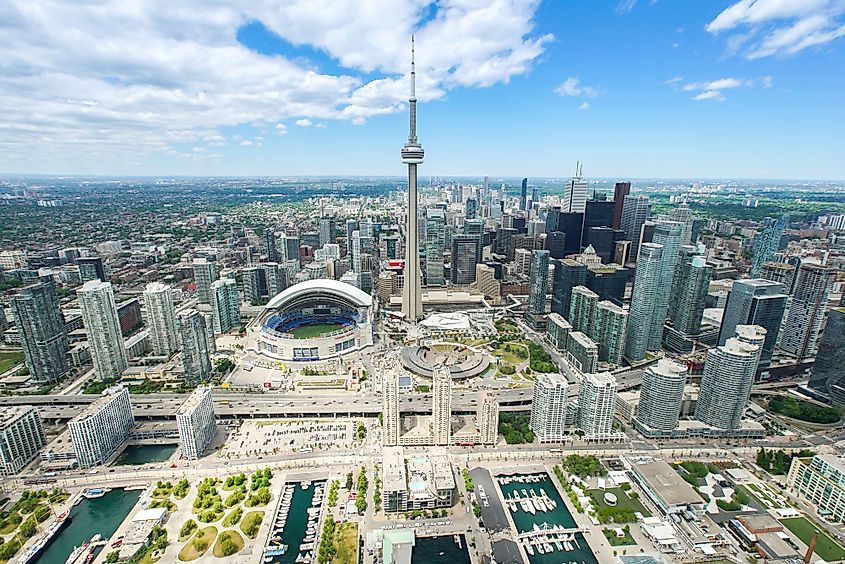
Toronto covers approximately 630 square km, 46 km of which straddles the northwestern shores of Lake Ontario. Toronto is located about four hours from the Canadian capital city of Ottawa as well as the US-Canada International border in Michigan. The city is situated only about 1 hour from Niagara Falls, Ontario.
Toronto experiences a humid continental climate, with hot summers and cold winters. The warm season lasts from the starting of June to the mid of September, with an average temperature ranging between 25°C and 16.2°C. The cold season lasts from the beginning of December to the mid of March, with an average temperature ranging between -7.7°C and -1.1°C. The city gets an average rainfall of 28.11 inches and an average snowfall of 47.8 inches in a year.
Brief History Of Toronto
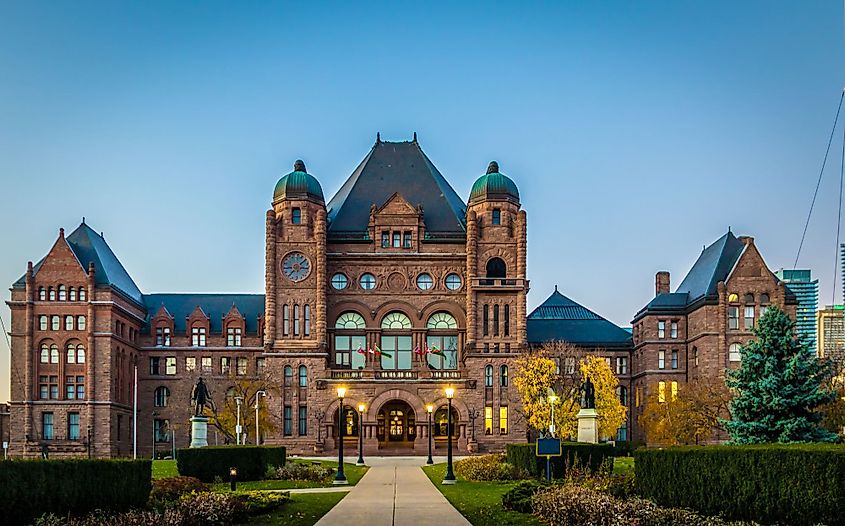
The Mississauga First Nations occupied the land that makes up modern Toronto during initial European settlements in the 1600s. The numbers of the Mississauga dwindled in the ensuing centuries due to European disease, as British loyalists escaping the American Revolutionary War settled around modern-day Ontario. The British Constitutional Act of 1791 split British Canada into two. Modern Ontario and then-Western Quebec became Upper Canada, and Eastern Quebec became lower Canada. The first governor of Upper Canada, John Graves Simcoe, considered many places to replace Newark (modern Niagara) as the capital. London, Ontario was considered, and Simcoe even visited York, modern-day Toronto. He ultimately settled on York, later renamed Toronto in 1834. Toronto would not be chosen as the nation's capital upon the consolidation of British territories in Canada during the mid-19th century. That honor went to Ottawa in 1857, a decade before the official Canadian Confederation in 1867, which most Canadians consider to be the de-facto independence of the nation.
During the War of 1812, American forces pushed into Toronto and occupied it for approximately a week. Americans infamously sacked the town and set fire to several buildings. The economic cost of the Napoleonic Wars from 1803 to 1815 saw many immigrants arrive in York, most of whom arrived from the United Kingdom. The Irish Potato Famine of 1854 saw many Irish immigrants settle in Toronto. Many of these immigrants were Protestant, forming the Orange Order of Canada. The Orange Order dominated politics and social life in Toronto, and the Protestant British colonial authorities were more than happy to abide. The following century would see increasing sectarian tension, violence, and corruption between Protestants and Catholics. The worst instance of violence was that of the Jubilee Riots of 1875, where pitched battles were said to have taken place between religious factions on the streets of Toronto.
Toronto was sometimes nicknamed the "Belfast of Canada" for its strong Protestant and Unionist influence during this period. Elsewhere in Toronto's social dynamic, there were segregationist practices against blacks and people of color. While the United States, particularly the antebellum south, was infamous for segregation, the Ontario government also endorsed and/or turned a blind eye to segregation within their institutions until the mid-20th century. Many schools were segregated, as well as places of business and certain public places. There was also strong anti-semitic sentiment in Toronto during the 19th and early 20th centuries. Toronto's antisemitism came to a head during the Christie Pits Riot of 1933. Nazi sympathizers attended a local baseball game and waved Nazi flags at the Christie Pits. Infuriated Jewish attendees, as well as anti-Nazi allies, confronted the Nazis and massive fights broke out in and around the baseball pitch. While nobody died in the riot, the incident shined a bright light on strained race relations in Canada and the history of racism in the nation. This incident is still remembered today by Canadians all over the nation.
During the Second World War, Toronto became a rallying point for Canadian military personnel, as well as manufacturing that contributed to its fight against Nazi Germany, Fascist Italy, and Imperial Japan. This increased the city's prestige and economic output. During the mid-20th century, Toronto's population began to grow exponentially. People from all over the world started to settle in Canada's second-largest city, and by 1951, Toronto had exceeded 1 million residents. The increase in population also meant the growth of the city's economy and the growth of the city itself, as it incorporated townships and villages in the surrounding area to accommodate the population growth. Toronto surpassed Montreal in population size in the 1970s and began to take over as the central economic hub of Canada. Canada's biggest banks are now located in Toronto, as well as some of its most powerful corporations. Toronto was infamously hit by massive snowstorms in January 1999, as the Canadian Army was called in to help clear the snow. Toronto became the site of the most significant mass arrests in Canadian history as police and security forces suppressed largescale protests surrounding the 2010 G20 summit. Toronto is currently recovering from its near year-long stoppage of economic activities due to the COVID-19 pandemic. After mostly re-opening in Summer 2021, the city has contended with increased unemployment, a spike in substance abuse issues, and tense street protests against vaccine mandates and mask-wearing laws.
The Population And Economy Of Toronto
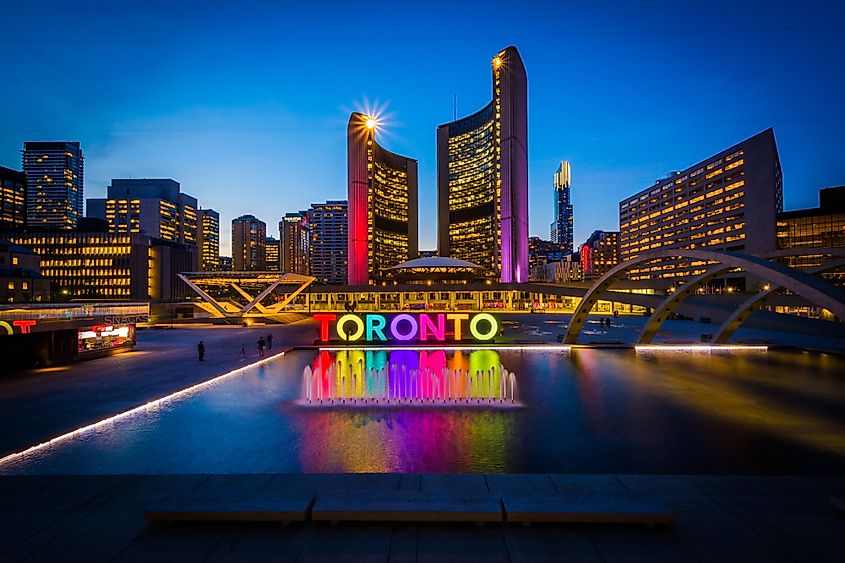
Toronto's population sits at approximately 2,794,356 inhabitants. Toronto is around 50 percent white,12 percent East Asian, 8 percent black, and 7 percent Southeast Asian. The remaining 30 percent of the city consists of several ethnic groups from across the globe, including a 1.5 percent mixed-race population. Toronto is currently one of the most diverse cities globally and the most diverse in all of Canada. Toronto skews slightly towards a cis female population, at around 52 percent. The remaining 48 percent of Toronto identifies as cis male. However, despite Toronto's strong Protestant roots in the 19th and early 20th centuries, modern Toronto is a majority Catholic-Christian city. About 28 percent of religious Torontonians follow the Catholic tradition, followed by various forms of Protestantism at 11 percent. The largest non-Christian population is that of the Muslim community. Approximately 8 percent of religious Torontonians adhere to Islam, while 3 percent practice Judaism. Buddhism is believed to have followers comprising 2 percent of Toronto's religious population. About 24 percent of Toronto is considered to not identify with any religion.
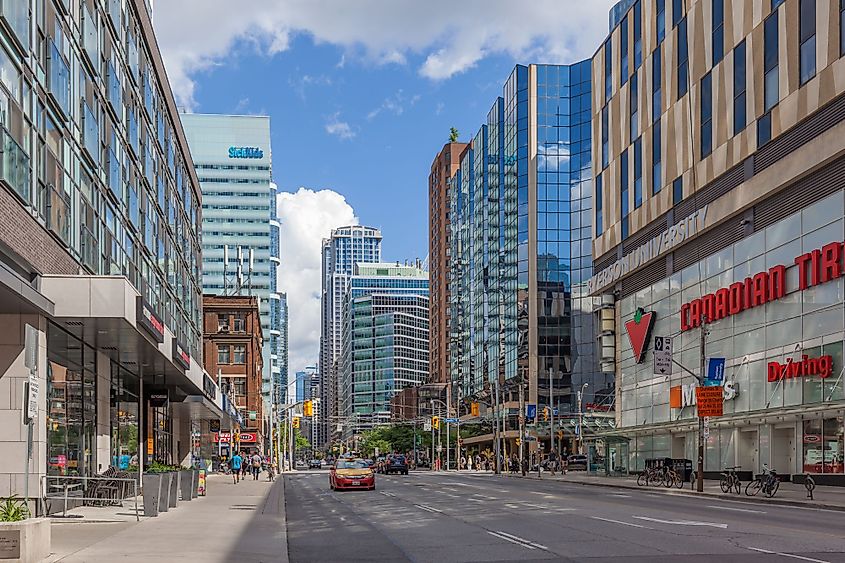
Toronto is the industrial, financial, and commercial center of the entire nation of Canada. Toronto is the centerpiece of Canada's banking sector, Canada's biggest banks are all headquartered in Bay Street, Toronto. Being the largest city in Canada and one of the largest in North America, Toronto naturally has a thriving media scene that employs many. Tourism surrounding Toronto's attractions, with the CN Tower, its restaurants, and its sports scene, is particularly profitable. Finally, real estate is lucrative in Toronto as it hosts some of the world's most expensive properties, while population growth creates more homes to sell and build.
Attractions In Toronto
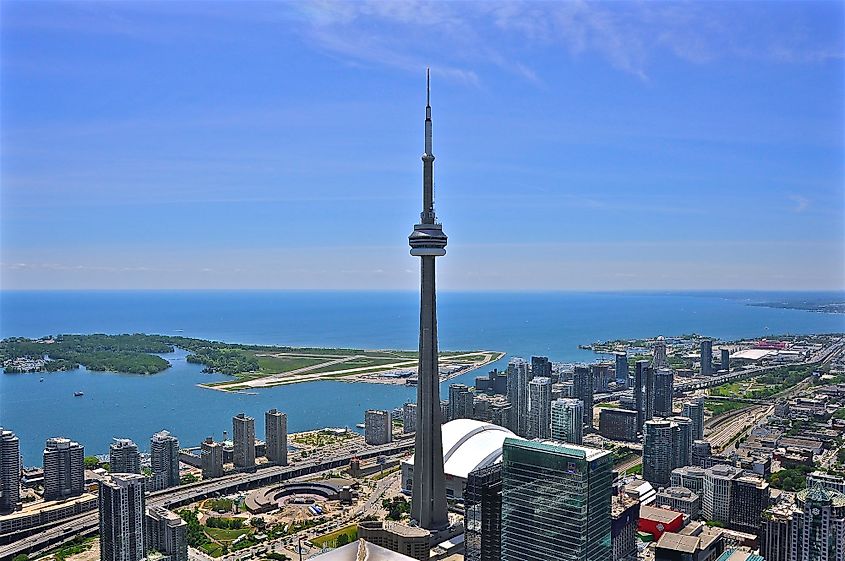
As the largest city and the darling of the entire Canadian nation, Toronto's attractions are almost worth an article all to themselves. The most notable attraction that can be seen even from miles away is the CN Tower. Completed in 1976, the Canadian National railway company wanted to create a radio tower to clear up communications issues in Toronto and the surrounding area. The grand scale of the tower was also meant to be a show of the prestige, industrial and architectural capability of Canada. However, it has since long transcended this purpose, as it has become the most prominent tourist attraction in Ontario, both literally and in terms of money made. The tower is host to several exhibitions, souvenirs, a restaurant, and of course, incredible views from just about every angle.
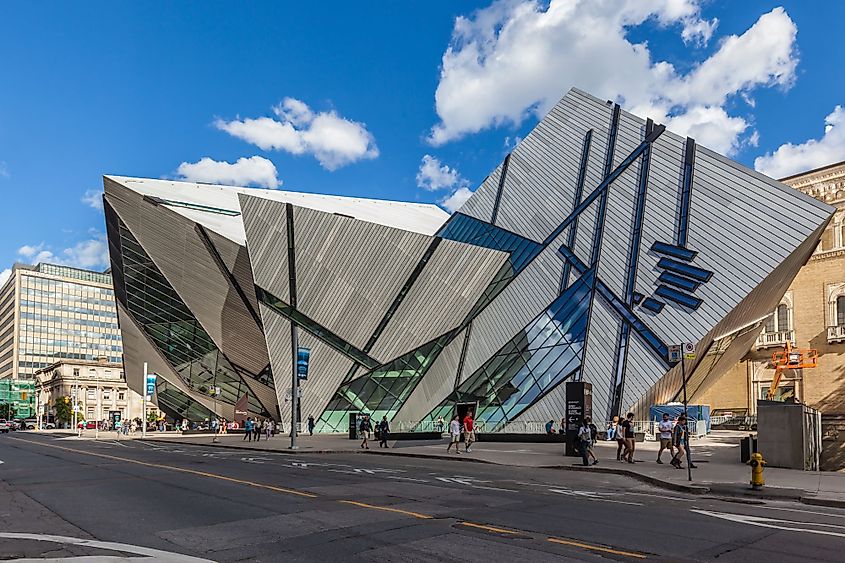
One can also visit Ripley's Aquarium of Canada, home to countless forms of marine life that one can observe in person. The Royal Ontario Museum has displays that satisfy art enthusiasts, history buffs, and nature fans. Those who wish to take it slower are encouraged to visit Toronto Island Park. There are many hiking trails, beachfront and beautiful views on the Toronto Islands. Sports enthusiasts can visit the Hockey Hall of Fame. The legends of the sport of ice hockey are commemorated at this building, and the history of both ice hockey and the NHL are celebrated.
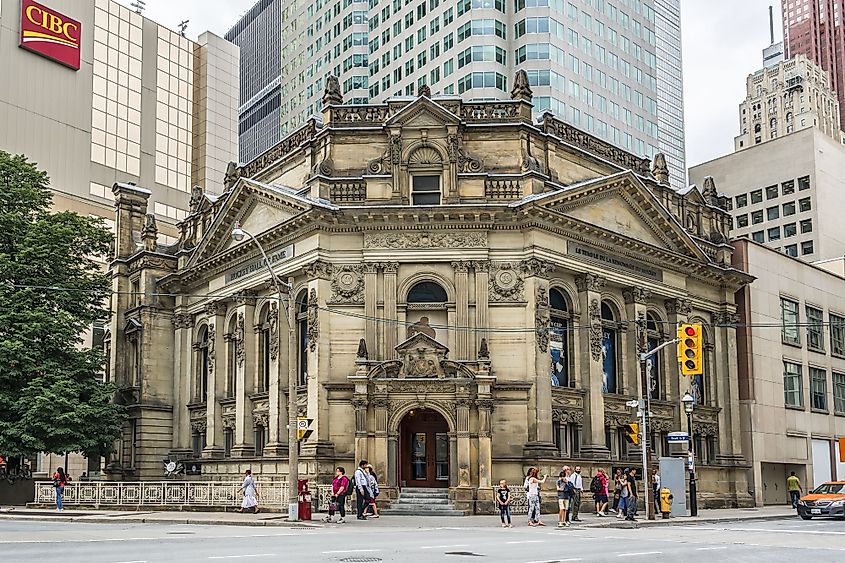
Toronto is Canada's ambassador to the world. Toronto faces issues that many other big cities face, such as high living costs and increased crime. However, the city has survived sectarian and racial violence, multiple economic recessions, and even invasions. Today Toronto is one of the most profitable and prestigious cities globally. Toronto's presence alone has become a boon to many southern Ontario, as just being close to the provincial capital means a growing population, a diversified economy, and an ever-growing real estate demand. Therefore, whatever issues the world throws at Toronto, whether those issues are pandemics, crime, or political tension, it is sure to come out of it stronger than before.











